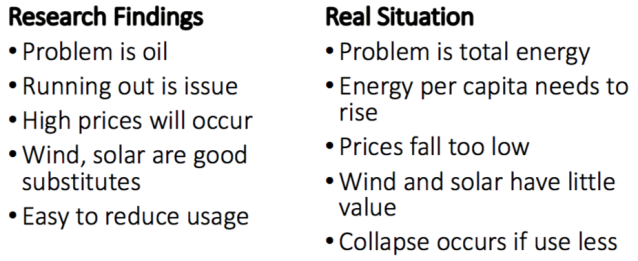Why the Standard Model of Future Energy Supply Doesn’t Work
The most prevalent view regarding future oil supply, as well as total energy supply, seems to be fairly closely related to that expressed by Peak Oilers. Future fossil fuel supply is assumed to be determined by the resources in the ground and the technology available for extraction. Prices are assumed to rise as fossil fuels are depleted, allowing more expensive technology for extraction. Substitutes are assumed to become possible, as costs rise.
Those with the most optimistic views about the amount of resources in the ground become especially concerned about climate change. The view seems to be that it is up to humans to decide how much energy resources we will use. We can easily cut back, if we want to.
The problem with this approach is the world economy is much more interconnected than most analysts have ever understood. It is also much more dependent on growing energy supply than most have understood. Surprisingly, we humans aren’t really in charge; the laws of physics ultimately determine what happens.
In my view, Peak Oilers were correct about energy supplies eventually becoming a problem. What they were wrong about is the way the problem can be expected to play out. Major differences between my view and the standard view are summarized on Figure 1.
Let me explain some of the issues involved.
[1] Modeling is a lot more difficult than it looks.
Let’s take one common model of the part of the earth where we live, a street map:

Figure 2. Source: Edrawsoft.com
If we want to scale the model up to cover the whole world, we need to add a whole new dimension. In other words, we need to make a globe.
The same problem occurs with what seem to be simple economic models, like supply and demand:
…click on the above link to read the rest of the article…
